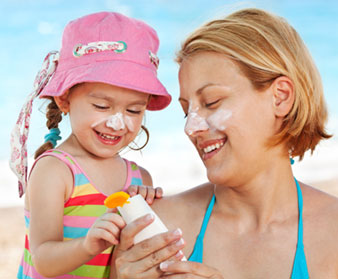Keeping Childhood Cancer Survivors Safe in the Sun

"All the things that help anybody stay healthy are even more important for cancer survivors," said Nancy Keene, a parent of a survivor of childhood leukemia, and author of related books including "Childhood Cancer Survivors: A Practical Guide to Your Future."
Everyone should enjoy a little sunshine, but melanoma is the most common form of cancer in Americans aged 25-29. Patients who underwent radiation treatment are already at a higher risk for skin cancer, meaning they have to be super diligent. Some degree of sunburn is common, but excessive sun exposure can cause serious health problems, especially for survivors.
"There are a lot of survivors in trouble out there, and they don't know it. If they get follow-up care from an expert, then they minimize the chances of having problems," Keene emphasized.
When outdoors this season, The National Children's Cancer Society (NCCS) recommends the following preventative measures to limit sun exposure:
1. Use a minimum of SPF 15. Apply 15-20 minutes before sun exposure. Broad-spectrum SPF 15 will block out 93 percent of UVA and UVB rays, which are the more dangerous burning rays.
2. Apply sunscreen every two hours. Apply a thick layer, and reapply after swimming.
3. Check the date on the package. Sunscreen has a shelf life of two years.
4. Limit your time in the sun. Avoid peak hours of damaging rays between late morning and early afternoon.
5. Shade yourself in peak hours. Wear a hat with a wide brim or carry an umbrella to create extra shade.
6. Wear sunglasses. Protect your eyes from exposure to UV light.
7. Avoid reflective surfaces. Water, sand and concrete can increase your risk of burning rays.
8. Don't use indoor tanning beds. They contain the same dangerous UV rays as natural sun exposure.
To find more information about helping survivors cope with late effects or life after cancer treatment, visit www.thenccs.org and www.beyondthecure.org.

No comments: